
July 10, 2017
 Thom Carroll, File/PhillyVoice
Thom Carroll, File/PhillyVoice
Camden County police Officers, from left, Vidal Rivera, Tim Freeman and Luis Sanchez stand at 4th and York streets during a foot patrol on June 28, 2017. The county police chief says community policing with more officers on foot or bikes is a primary reason for a huge decline in murders so far this year.
The number of homicides in Camden is down dramatically this year.
Halfway through 2017, the city of about 77,000 residents has had just nine murders to date. At that rate, Camden is running well below the 44 homicides reported last year.
That’s a far cry from where Camden was just five years ago, when it reported a grisly record of 67 murders in 2012, the last year the city ran its own police department. (The truer number for that year is actually 69 murders as two teens perished in what appeared to be a pay-back fire that was never formally classified an arson.)
The number of murders has generally trended lower since Camden County took over policing in the city – 58 in 2013, 33 in 2014 and 34 in 2015.
Camden County police Officer Luis Sanchez talks with a North Camden resident while on foot patrol with fellow Officer Tim Freeman on Wednesday, June 28, 2017.
In fact, the city’s overall uniform crime rate is on track to be the lowest since record-keeping began, according to police, based on FBI statistics. Camden is often classified as one of the most violent cities in the country.
Luis Sanchez, a veteran Camden cop who has more than 20 years on the streets of the city, which , has seen the change at eye level.
He explains: There is more technology, there is more manpower (though retention remains an issue), there are fewer open vacant buildings to harbor drugs and bad guys, but most of all there is a change in approach by the department which he in turn sees reciprocated back by the community.
Talking is now the department’s first tool, “not “twisting someone’s arm out of their socket.”
The result has been a better police relationship with the community that is “making it easier to solve crimes,” said Sanchez, a Camden native. “People are more willing to give information. There is a sense of trust."
Camden County police Officer Vidal Rivera drives through a North Camden neighborhood on patrol on Wednesday, June 28, 2017.
And while that isn’t universal – some residents clammed up or walked away during a recent police patrol with PhillyVoice journalists through North Camden and the Latin business district on Federal Street in East Camden – many residents engaged Sanchez and two younger officers – one on the job for two years, the other just a few months.
And it wasn’t just to exchange pleasantries, though there was that, too. Sanchez heard tales of neighborhood problems from several citizens. He made notes to send up the chain, information which will be used to head off issues before they boil over.
The Camden County Police Department uses 'Eye in the Sky' cameras throughout the city to help monitor crime and drug activity.
A young mother in North Camden, watching from her stoop as her son and a goddaughter kibitzed with three officers, said that when she first moved in a few years ago no playing was allowed outside.
Now her children are allowed to play and ride bikes in front of her home. “It’s better than when we moved in,” she said.
A small business owner just off Admiral Wilson Boulevard, the roadway leading to the Ben Franklin Bridge and Philadelphia, said, “I used to hear gunshots every weekend,” but now there is “definitely a huge difference.”
Camden County Police Chief J. Scott Thomson speaks during a recent interview. He is the architect of the community policing focus and many other changes in the department.
Police Chief J. Scott Thomson, the architect of many of the changes in the department, said it is “never one thing” that makes a change, but he ticked off three crucial changes:
• Community policing with more cops on foot or bikes and less time in patrol cars. That's assures more communication and trust.
• Partnering more effectively with other law enforcement agencies: the Camden County Prosecutor’s Office, the FBI, the state Attorney General and U.S. Attorney. There’s a daily “morning huddle” with all players present at the table, explained the chief.
• Partnering with the city school system and doing more outreach to school-aged residents in a city that is statistically much younger than other large urban areas in New Jersey.
By getting more into the communities on an everyday basis, not just for “enforcement and crises,” both residents and police have a more positive understanding of each other and police are seen as “not a monolith,” said the chief.
That and partnering with other law enforcement has enabled the department to “fish with a spear, not with a net” and target deployment better, Thomson added.
Federal assistance has meant “smarter and faster” intel and a quicker turnaround on ballistics information, better training and equipment, and an enhanced ability to analyze video surveillance footage, said the chief.
That in turn has meant it is easier to go after the most violent criminals in the city while simultaneously addressing quality of life issues, such drug dealers and addicts making a walk to the corner store a daily challenge in some neighborhoods.
After a recent drug-related shooting at 4th and York streets, the facade of a nearby home shows evidence of a bullet strike that narrowly missed a nearby neighbor, police said.
The falling number of homicides has also helped the city address a long-lingering issue: its low “clearance” rate – cases considered solved – for homicides, said Thomson.
A recent national study put the solve rate for murders across the country during the years between 2006 to 2015 at 63.6 percent.
But Camden was listed in the Murder Accountability Project’s study as having the third worst decline in solving murders during that time period, averaging just a 42 percent solve rate in those years.
In the decade before, Camden had a solve rate of 73 percent, according to the study.
But with homicides decreasing, the solve rate is improving, too.
Fewer murders means more time and resources now for the police department and the Camden County Prosecutor’s Office, which has the ultimate responsibility for solving murders in the city.
The solve rate this year stands at about 61 percent.
A spokeswoman for the prosecutor said an increase in personnel in its Homicide Unit, plus five full-time police detectives assigned to homicide, plus the prosecutor’s Victim/Witness Unit, has improved statistics.
While he’s proud of the improved numbers, the chief said he takes more pride from hearing a mom in North Camden now feels safe enough to let her children play outside – even if it is just in front of her home.
Thomson said the department’s next challenge is to move from the streets of the city to the living rooms of Camden and address how the “pathologies of poverty” have affected domestic crimes, especially aggravated assaults.
Better educational and economic opportunities for a city classified by the U.S. Census as the poorest in America will be crucial, said the chief.
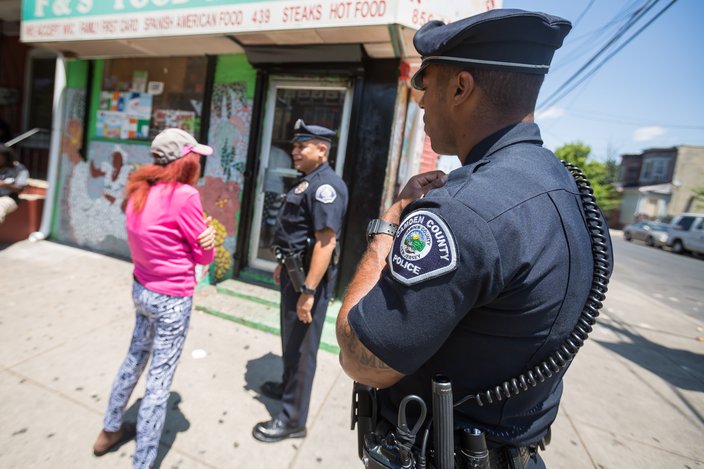 Thom Carroll/PhillyVoice
Thom Carroll/PhillyVoice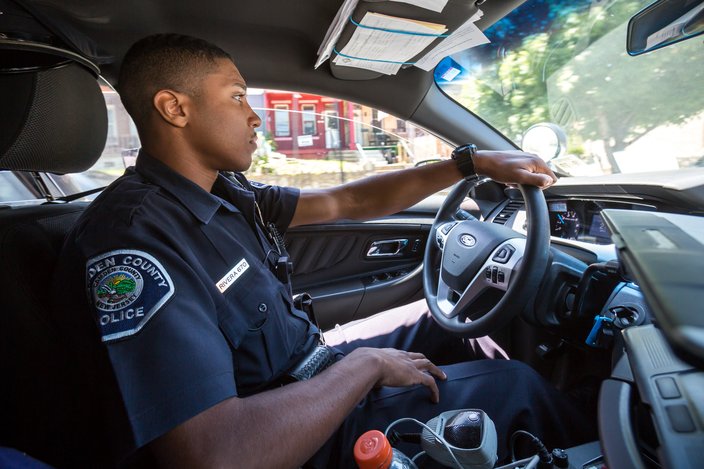 Thom Carroll/PhillyVoice
Thom Carroll/PhillyVoice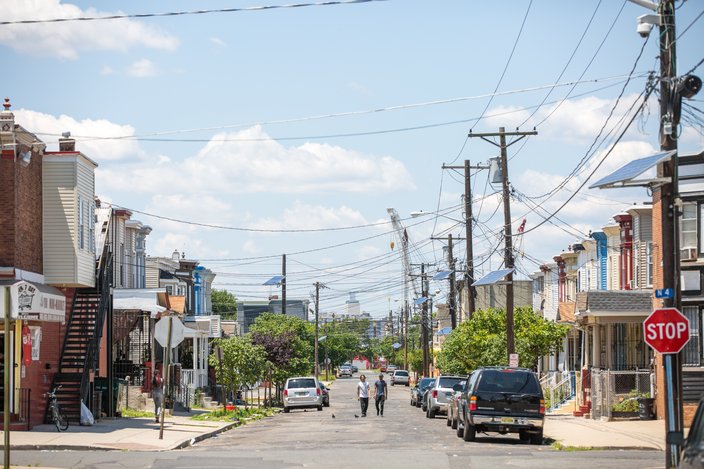 Thom Carroll/PhillyVoice
Thom Carroll/PhillyVoice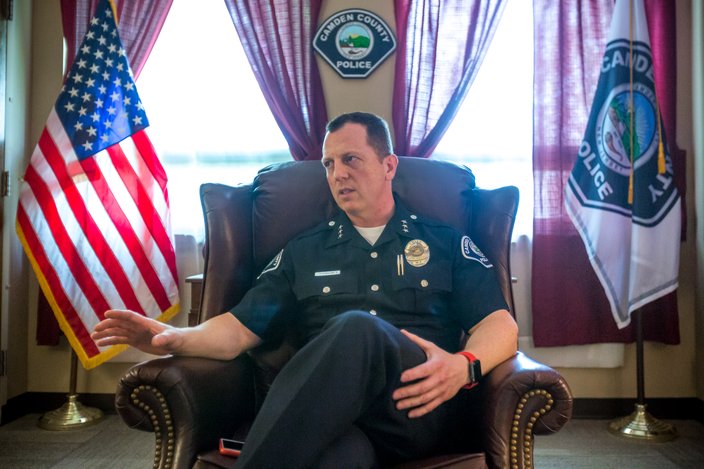 Thom Carroll/PhillyVoice
Thom Carroll/PhillyVoice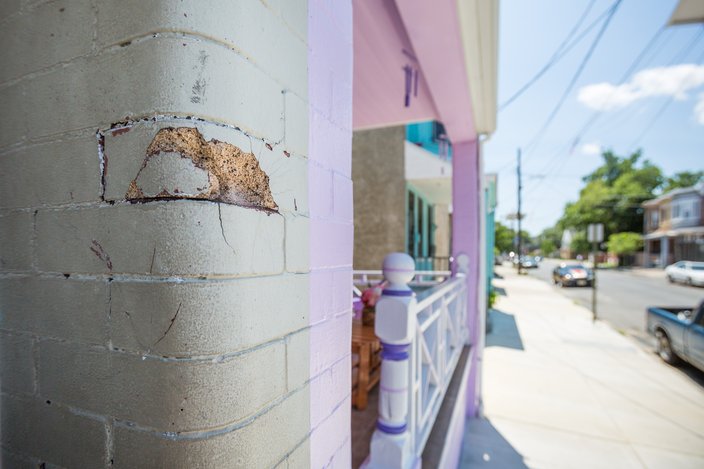 Thom Carroll/PhillyVoice
Thom Carroll/PhillyVoice